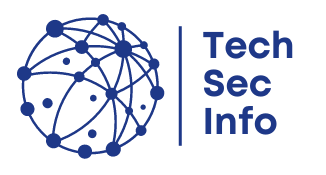As of January 10, 2023, CISA will no longer be updating ICS security advisories for Siemens product vulnerabilities beyond the initial advisory. For the most up-to-date information on vulnerabilities in this advisory, please see Siemens’ ProductCERT Security Advisories (CERT Services | Services | Siemens Global).
View CSAF
1. EXECUTIVE SUMMARY
- CVSS v3 7.5
- ATTENTION: Exploitable remotely/low attack complexity
- Vendor: Siemens
- Equipment: RUGGEDCOM APE 1808
- Vulnerabilities: Stack-based Buffer Overflow, Use of Password Hash With Insufficient Computational Effort, Cross-site Scripting
2. RISK EVALUATION
Successful exploitation of these vulnerabilities could allow an attacker to execute unauthorized code or commands via specially crafted CLI commands and access to decrypting the CLI backup file.
3. TECHNICAL DETAILS
3.1 AFFECTED PRODUCTS
The following products of Siemens, are affected:
- Siemens RUGGEDCOM APE1808: All versions with Fortinet NGFW
3.2 Vulnerability Overview
3.2.1 STACK-BASED BUFFER OVERFLOW CWE-121
A stack-based buffer overflow in Fortinet FortiOS version 7.4.0 through 7.4.1 and 7.2.0 through 7.2.7 and 7.0.0 through 7.0.12 and 6.4.6 through 6.4.15 and 6.2.9 through 6.2.16 and 6.0.13 through 6.0.18 allows attacker to execute unauthorized code or commands via specially crafted CLI commands.
CVE-2023-46720 has been assigned to this vulnerability. A CVSS v3 base score of 6.7 has been assigned; the CVSS vector string is (CVSS:3.1/AV:L/AC:L/PR:H/UI:N/S:U/C:H/I:H/A:H).
3.2.2 USE OF PASSWORD HASH WITH INSUFFICIENT COMPUTATIONAL EFFORT CWE-916
A use of password hash with insufficient computational effort vulnerability [CWE-916] affecting FortiOS version 7.4.3 and below, 7.2 all versions, 7.0 all versions, 6.4 all versions and FortiProxy version 7.4.2 and below, 7.2 all versions, 7.0 all versions, 2.0 all versions may allow a privileged attacker with super-admin profile and CLI access to decrypting the backup file.
CVE-2024-21754 has been assigned to this vulnerability. A CVSS v3 base score of 1.8 has been assigned; the CVSS vector string is (CVSS:3.1/AV:L/AC:H/PR:H/UI:R/S:U/C:L/I:N/A:N).
3.2.3 IMPROPER NEUTRALIZATION OF INPUT DURING WEB PAGE GENERATION (‘CROSS-SITE SCRIPTING’) CWE-79
A use of password hash with insufficient computational effort vulnerability [CWE-916] affecting FortiOS version 7.4.3 and below, 7.2 all versions, 7.0 all versions, 6.4 all versions and FortiProxy version 7.4.2 and below, 7.2 all versions, 7.0 all versions, 2.0 all versions may allow a privileged attacker with super-admin profile and CLI access to decrypting the backup file.
CVE-2024-23111 has been assigned to this vulnerability. A CVSS v3 base score of 6.8 has been assigned; the CVSS vector string is (CVSS:3.1/AV:N/AC:L/PR:H/UI:R/S:U/C:H/I:H/A:H).
3.2.4 STACK-BASED BUFFER OVERFLOW CWE-121
A stack-based buffer overflow in Fortinet FortiPAM version 1.2.0, 1.1.0 through 1.1.2, 1.0.0 through 1.0.3, FortiWeb, FortiAuthenticator, FortiSwitchManager version 7.2.0 through 7.2.3, 7.0.1 through 7.0.3, FortiOS version 7.4.0 through 7.4.3, 7.2.0 through 7.2.7, 7.0.0 through 7.0.14, 6.4.0 through 6.4.15, 6.2.0 through 6.2.16, 6.0.0 through 6.0.18, FortiProxy version 7.4.0 through 7.4.2, 7.2.0 through 7.2.9, 7.0.0 through 7.0.15, 2.0.0 through 2.0.13, 1.2.0 through 1.2.13, 1.1.0 through 1.1.6, 1.0.0 through 1.0.7 allows attacker to execute unauthorized code or commands via specially crafted packets.
CVE-2024-26010 has been assigned to this vulnerability. A CVSS v3 base score of 7.5 has been assigned; the CVSS vector string is (CVSS:3.1/AV:N/AC:H/PR:N/UI:R/S:U/C:H/I:H/A:H).
3.3 BACKGROUND
- CRITICAL INFRASTRUCTURE SECTORS: Communications, Critical Manufacturing, Energy, and Transportation
- COUNTRIES/AREAS DEPLOYED: Worldwide
- COMPANY HEADQUARTERS LOCATION: Germany
3.4 RESEARCHER
Siemens reported these vulnerabilities to CISA.
4. MITIGATIONS
Siemens has identified the following specific workarounds and mitigations users can apply to reduce risk:
- RUGGEDCOM APE1808: Contact customer support to receive patch and update information.
As a general security measure, Siemens recommends protecting network access to devices with appropriate mechanisms. To operate the devices in a protected IT environment, Siemens recommends configuring the environment according to Siemens’ operational guidelines for industrial security and following recommendations in the product manuals.
Additional information on industrial security by Siemens can be found on the Siemens industrial security webpage
For more information see the associated Siemens security advisory SSA-698820 in HTML and CSAF.
CISA recommends users take defensive measures to minimize the risk of exploitation of these vulnerabilities, such as:
- Minimize network exposure for all control system devices and/or systems, ensuring they are not accessible from the internet.
- Locate control system networks and remote devices behind firewalls and isolating them from business networks.
- When remote access is required, use more secure methods, such as Virtual Private Networks (VPNs). Recognize VPNs may have vulnerabilities, should be updated to the most recent version available, and are only as secure as the connected devices.
CISA reminds organizations to perform proper impact analysis and risk assessment prior to deploying defensive measures.
CISA also provides a section for control systems security recommended practices on the ICS webpage on cisa.gov. Several CISA products detailing cyber defense best practices are available for reading and download, including Improving Industrial Control Systems Cybersecurity with Defense-in-Depth Strategies.
CISA encourages organizations to implement recommended cybersecurity strategies for proactive defense of ICS assets.
Additional mitigation guidance and recommended practices are publicly available on the ICS webpage at cisa.gov in the technical information paper, ICS-TIP-12-146-01B–Targeted Cyber Intrusion Detection and Mitigation Strategies.
Organizations observing suspected malicious activity should follow established internal procedures and report findings to CISA for tracking and correlation against other incidents.
No known public exploitation specifically targeting these vulnerabilities has been reported to CISA at this time.
5. UPDATE HISTORY
- July 11, 2024: Initial Publication
